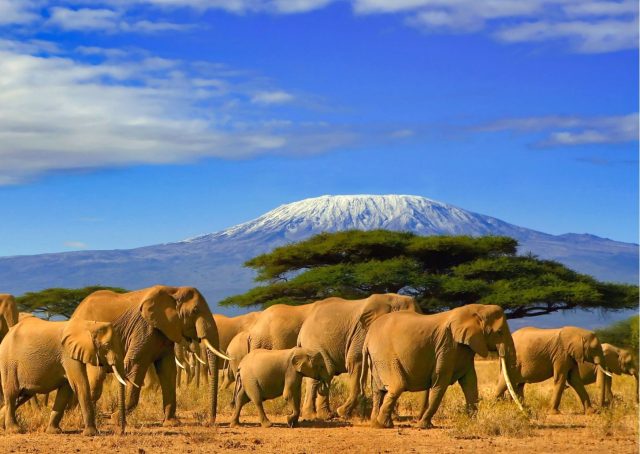Kenya on August 30, 2021, released the results of the country’s first-ever national wildlife census. Tourism & Wildlife Cabinet Secretary Najib Balala presented the report to President Uhuru Kenyatta at State House Nairobi.
The government launched the country’s first wildlife census in May 2021 with the objective of establishing accurate data on terrestrial and aquatic species. The survey aimed to aid conservation and identify threats to the country’s vast but threatened wildlife populations.
President Uhuru Kenyatta applauded conservation agencies for successfully clamping down on poaching and urged them to find newer, inventive approaches to protect wildlife.
“The reduction in losses of key species such as elephants, rhinos and other endangered species is because of the great work that KWS, is doing. Wildlife is our heritage, this is our children’s legacy and it is important for us to be able to know what we have in order to be better informed on policy and also on actions needed as we move forward,” said President Kenyatta.
Among the species counted using the geographic information system (GIS), camera traps, helicopters, vehicles, and boats were land and water mammals, key birds and endangered primates. More than 30 species of mammals, birds and marine species were counted during the census.
Results of the census show that Kenya had 36,280 elephants, a 12-percent jump from the figures recorded in 2014, when poaching activity was at a high. The population of African savanna elephants plunged by at least 60 percent in the last half century, prompting their reclassification as “endangered” in the latest update to the IUCN’s “Red List” of threatened species.
Additionally, the survey counted 1,739 rhinos including 897 black rhinos, 842 white rhinos and two northern white rhinos. The number of lions counted was 2,589, with hyenas being 5,189 and 1,160 cheetahs.
The census results on the population of other iconic species included 41,659 buffalo, 13,530 Maasai giraffes, 121,911 common zebras, 2,649 grevy’s zebras and 57,813 wildebeest.
Other species counted included 1,788 hippos alongside critically endangered species like mountain bongo whose number stood at 150 and sitatunga antelope that numbered 473.
The key marine species counted were 340 sea turtle nests, nine whale sharks, 63 humpback whales, 354 Indo-Pacific bottlenose dolphins, two blue whales, 29 great white sharks and 17 tiger sharks.
Among the waterfowl birds that were counted included 97,805 lesser flamingos, 523 great white pelicans, 963 Egyptian geese, 57 African fish eagles and 720 yellow-billed stork.
“The census recorded an increase on some of the charismatic species such as elephants, rhinos, lions, giraffe, grevy’s zebra, hirola among others and established baseline numbers for other species,” the report says.
The report also noted that several human activities like livestock incursions, logging, charcoal burning and illegal settlements were observed during the 90 days exercise near major wildlife sanctuaries.
Additionally, other threats to wildlife that were observed during the ground and aerial count included habitat loss, land-use changes and exponential growth of the human population.

















































